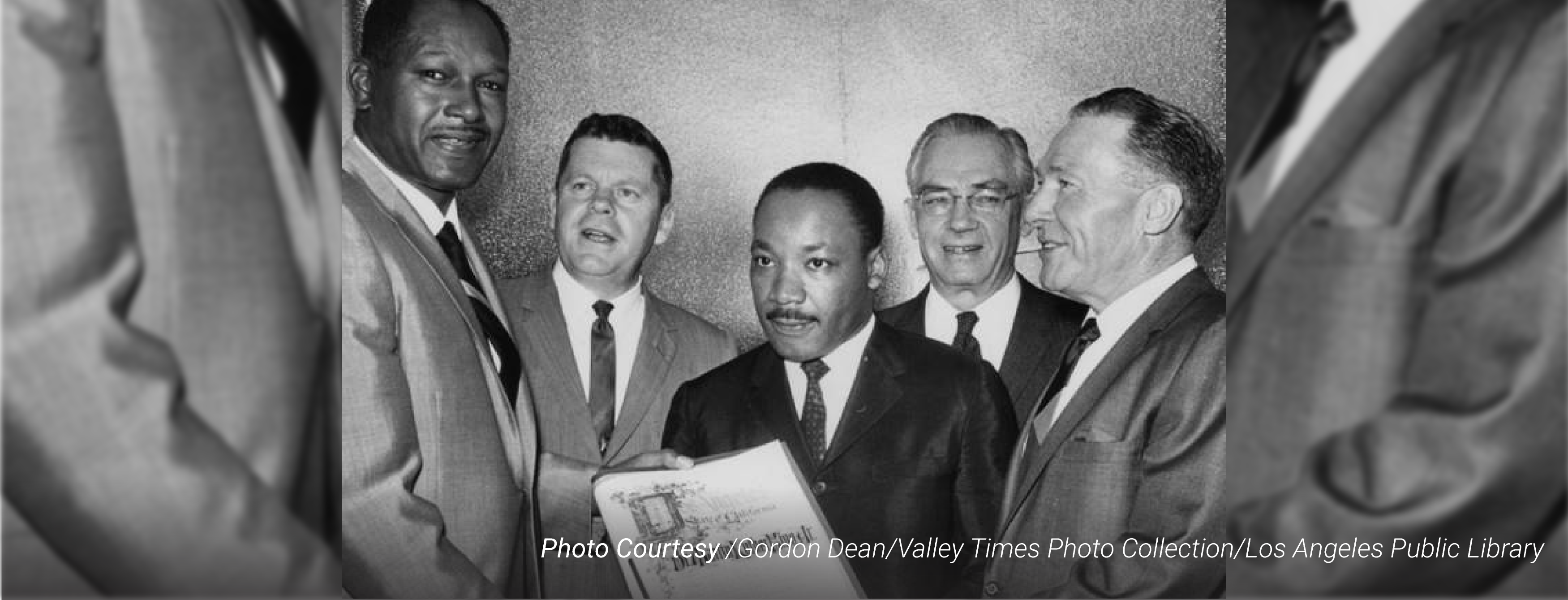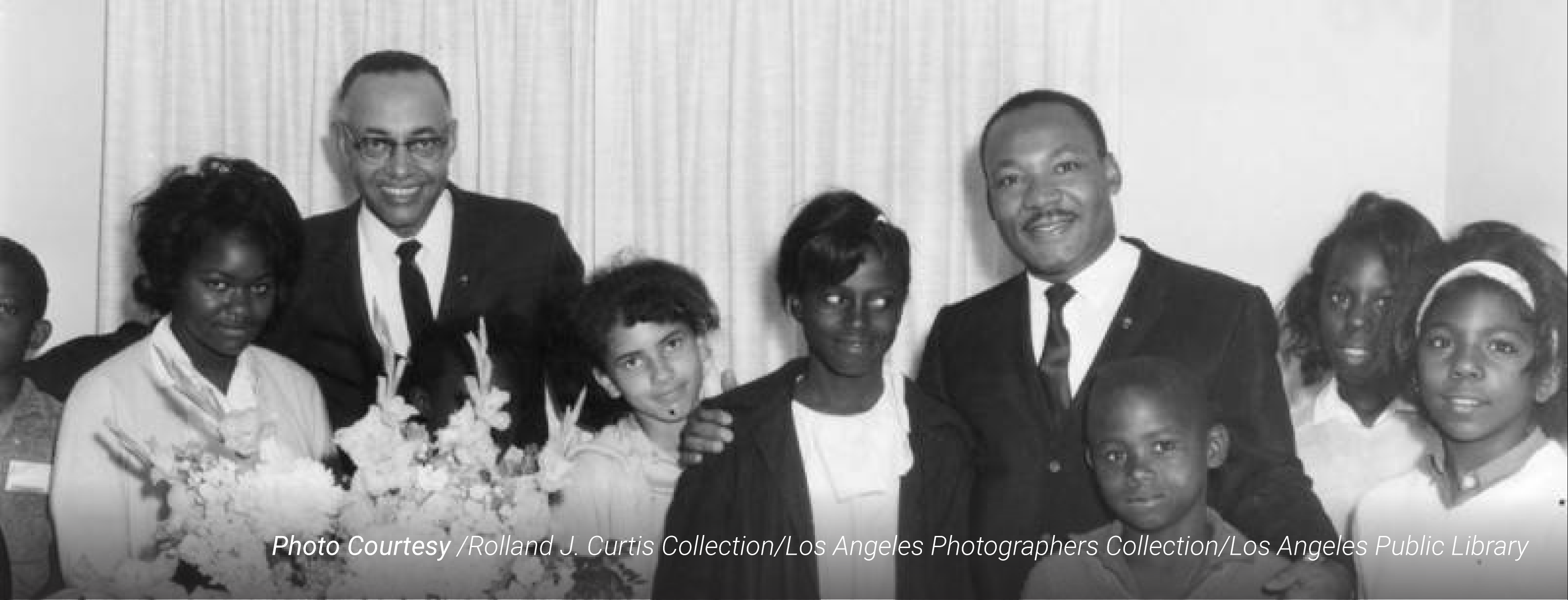
On the third Monday in January, we commemorate the life of civil rights legend Dr. Martin Luther King, Jr. It’s a national day of service for many and a day to recommit to the work of dismantling racism and building an America that lives up to its promise that all men are created equal under the law.
Although Dr. King served as the pastor at Ebenezer Baptist Church, as well as the president of the Southern Christian Leadership Conference in Atlanta, he campaigned across the country to promote non-violent efforts to achieve racial justice for black and brown Americans. His tireless efforts for racial equality include the Montgomery Bus Boycott, the March on Washington -- where he delivered his celebrated I Have a Dream speech -- and the March across the Pettus Bridge in Selma, Alabama, where he and others -- including former Congressional Leader John Lewis -- were met with brutal attacks by oncoming state troopers.
During his active touring years, from 1956 until just weeks before he was assassinated on April 4, 1968, Dr. King was a frequent visitor to Southern California and Los Angeles and delivered many memorable lectures, many of which are notated here.
During one such occasion in Los Angeles in 1964, Dr. King pronounced, "Men hate each other because they fear, they fear because they do not know one another, and they do not know one another because they are separated."

This statement was part of his speech addressing California Proposition 14, which was created in response to the passing of the Rumford Fair Housing Act in 1963. Approved by the California State Legislature, the Act sought to deconstruct widespread housing discrimination and segregation throughout California. For years, non-whites had been excluded from buying or renting property in many California neighborhoods by racially restrictive housing covenants, which were created and enforced by realtors and homeowners associations, because non-whites were perceived to drive down property values. Unfortunately, Prop 14 passed in 1964, as the struggle for fair housing in California continued.
Even though Prop 14 was ultimately struck down in 1966 when it was ruled unconstitutional, it revealed California as a deeply divided state about the issue of housing integration. Unjustly, there are still some remnants of widespread (unofficial) segregated housing practices in place in many California cities, and the issue of fair housing and de-segregation is one that remains unresolved in the state to this day.

Fortunately, City Planning is working in partnership with community members and stakeholders to address any lingering inequitable practices here in Los Angeles. For the Plan to House LA, the City of Los Angeles’s update to the Housing Element for 2021-2029, this means looking together towards the future while acknowledging and addressing past and present systemic racial and economic inequities.
There is a call to action from local governments for this upcoming Housing Element cycle (which is mandated every eight years) to comply with AB 686, the only state law in the nation that will affirmatively further fair housing. It defines “Affirmatively Furthering Fair Housing” as taking meaningful actions to:
- combat discrimination
- overcome patterns of discrimination
- foster inclusive communities
- specifies that actions must both replace segregated living patterns with integration and transform areas with racial and poverty concentration
AB 686 draws on the federal Fair Housing Act and legislation established during the Obama Administration that requires federal agencies and departments to establish programs to foster inclusive communities.

Thanks to the leadership and work of the State Legislature, as well as our elected representatives at the local level, (and despite the Trump Administration’s recent repeal of the Affirmative Furthering Fair Housing rule and replacement of it with Preserving Community and Neighborhood Choice) the Plan to House LA is still advancing in the spirit of the Fair Housing Act with the goal of creating inclusive and thriving communities.
Visit the Housing Element web page to learn more about how City Planning has been working with the City’s Housing + Community Investment Department to improve housing and planning policies in the City; and be sure to share your opinion by taking the #Plan2HouseLA survey to help shape our next Housing Element, which guides housing policy for the next decade.
Note: The largest living monument to Dr. King is right here and was designated as a Los Angeles Historic-Cultural Monument in 2014. Stretching along the entire length of MLK Boulevard in South Los Angeles – seven full miles, stands 400 majestic Canary Island Pine trees that were planted on January 15, 1990 when TreePeople coordinated three thousand volunteers when they gathered together to commemorate the legacy of Dr. King.